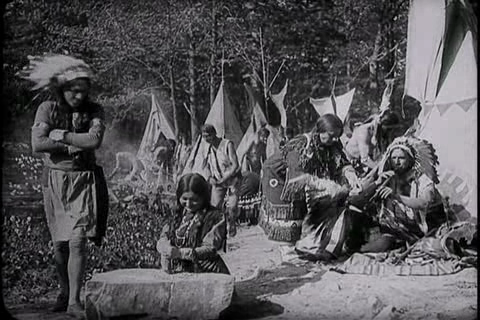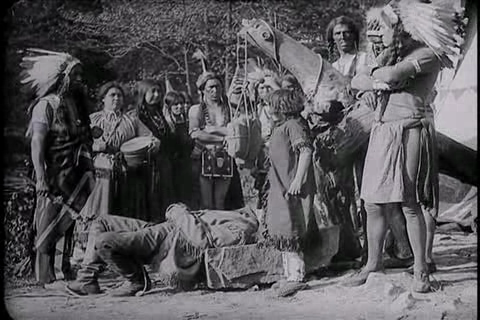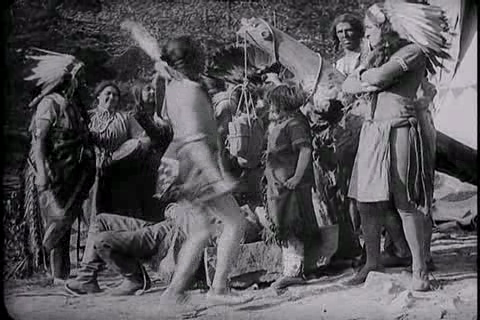The term "Celluloid Indians" is taken from the book by Jacquelyn Kilpatrick, Celluloid Indians - Native Americans and Film, University of Nebraska Press, 1999 which is highly recommended to anyone interested in this subject.
From the University of Nebraska Press website:

"Native American characters have been the most malleable of metaphors for filmmakers. The likeable Doc of Stagecoach (1939) had audiences on the edge of their seats with dire warnings about “that old butcher, Geronimo.” Old Lodgeskins of Little Big Man (1970) had viewers crying out against the demise of the noble, wise chief and his kind and simple people. In 1995 Disney created a beautiful, peace-loving ecologist and called her Pocahontas. Only occasionally have Native Americans been portrayed as complex, modern characters in films like Smoke Signals.
Celluloid Indians is an accessible, insightful overview of Native American representation in film over the past century. Beginning with the birth of the movie industry, Jacquelyn Kilpatrick carefully traces changes in the cinematic depictions of Native peoples and identifies cultural and historical reasons for those changes. In the late twentieth century, Native Americans have been increasingly involved with writing and directing movies about themselves, and Kilpatrick places appropriate emphasis on the impact that Native American screenwriters and filmmakers have had on the industry. Celluloid Indians concludes with a valuable, in-depth look at influential and innovative Native Americans in today’s film industry.

Jacquelyn Kilpatrick, of Choctaw, Cherokee, and Irish descent, is a professor of English at Governor’s State University in University Park, Illinois. Her articles have appeared in Creative Screenwriting and Cineaste."
White Fawn's Devotion (1910) (10:52)
Info from archive.org:
Likely the earliest film produced by a Native American.
Preserved by the Library of Congress.
Director: James Young Deer
Audio/Visual: silent, black & white
Public Domain
White Fawn's Devotion is the earliest surviving film directed by a Native American, and also the first film shot in America by the French company Pathé. In 2008, it was added to the United States National Film Registry as being deemed "culturally, historically, or aesthetically significant".
James Young Deer (also known as J. Younger Johnston), the uncredited director and writer of White Fawn's Devotion, was the first documented Native American film director. A member of the Winnebago tribe, Young Deer was hired by Pathé Frères as a director and scenario writer, and frequently worked in collaboration with his wife, Princess Red Wing (also known as Lillian St. Cyr). Out of the more than 100 films he made, White Fawn's Devotion is one of fewer than 10 films of Young Deer's to have survived.
DOWNLOAD
(Divx as multi-part rar-file):
PART 1 (95 MB)
PART 2 (23 MB)
More info on
James Young Deer
and Princess Red Wing:
"It is believed that Red Wing inspired the song, Red Wing -- words by Thurland Chattaway, music by Kerry Mills--copyrighted in 1907. Now in the public domain, the song has achieved a folk song-like status and has several variations."
(most notably Woody Guthrie's Union Maid)
DOWNLOAD ERNEST THOMPSON'S 1924 RECORDING
(from archive.org):
LOSSLESS
(4.7 MB FLAC)
VBR mp3 (2.8 MB)




Keine Kommentare:
Kommentar veröffentlichen